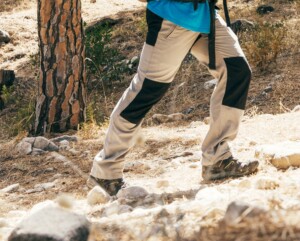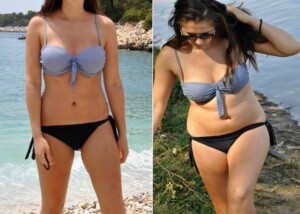
The question of “Which burns more fat, walking hills or running on level land?” is too broad a question to say one or the other burns more fat.
First of all, running level doesn’t work the same muscles as does walking hills.
With the hills, there is more pronounced hip flexion, knee flexion and foot (plantar) flexion, as well as extension for these three joints as well.

Freepik.com
This is why walking uphill is more difficult than walking level, and produces a unique feeling of effort that running level does not.
Right off the bat, this difference in angle changes things. The smaller the angle (the steeper the hill), the more hip, knee and foot flexion and extension required.
Think of “flexion” and “extension” as range of motion here, against resistance.
Jogging level is a higher impact activity and requires faster hip motion than does moving uphill.
To generically compare walking uphill with running level is tricky, because whichever burns more fat depends on speed and degree of incline, as well as type of training: long duration (steady state) or high intensity interval training (HIIT)?
Walking uphill on a 20 percent grade at 3 mph will burn more fat than running (i.e., jogging) flat at 5 mph, even though the jogging is faster.
On the other hand, sprint interval training (e.g., 12 mph sprints for 30 seconds alternating with casual pace walking), will burn much more fat than a sustained 3 mph walk at, say, 12 percent grade.

There are just so many variables when comparing running level with uphill walking: speed, steepness, ruggedness of terrain, and type of workout: long duration (steady state) or high intensity interval training.
Running on flat courses will not condition you for steep hill walking. And steep uphill will not prepare you for jogging.
These are two different cardio exercises, and one does not substitute for the other.
If you do HIIT with the hill walking, you’ll burn tremendous amounts of fat. If you do HIIT with the level running, you’ll burn tremendous amounts of fat.
My recommendation is to include both types of cardio in your fitness regimen, and for ultimate fat burning, perform HIIT for both.
 Lorra Garrick is a former personal trainer certified through the American Council on Exercise. At Bally Total Fitness she trained women and men of all ages for fat loss, muscle building, fitness and improved health.
Lorra Garrick is a former personal trainer certified through the American Council on Exercise. At Bally Total Fitness she trained women and men of all ages for fat loss, muscle building, fitness and improved health.
.


























